Life-like robotic dolphin designed by Hollywood animatronics firm involved in blockbusters ‘Free Willy’ and ‘Anaconda’ could replace the thousands of marine animals in captivity
- A firm has built a life-like robotic dolphin that could be used at theme parks
- The machine weighs 550 pounds and is more than eight feet long
- It is capable of mimicking the movements and sounds of a real dolphin
- The robot is remote controlled and a battery that provides 10 hours of swimming
There are nearly 3,000 dolphins in captivity around the world, but a new innovation could let these creatures to return home and still allow people to experience sea life.
Edge Innovations, a US animatronics company, has built a a life-like robotic dolphin that mimics the animal’s movements and sounds - creating the illusion of a live dolphin that humans can interact with.
Resembling a bottlenose dolphin, the 550-pound machine is deigned with skin made from medical-grade silicone and a battery that allows for up to 10-hours of swimming.
The team hopes the robotic marine mammal will one day jump through hoops and perform acrobatics at theme parks - but the starting cost for one is $3 million to $5 million.
Scroll down for video
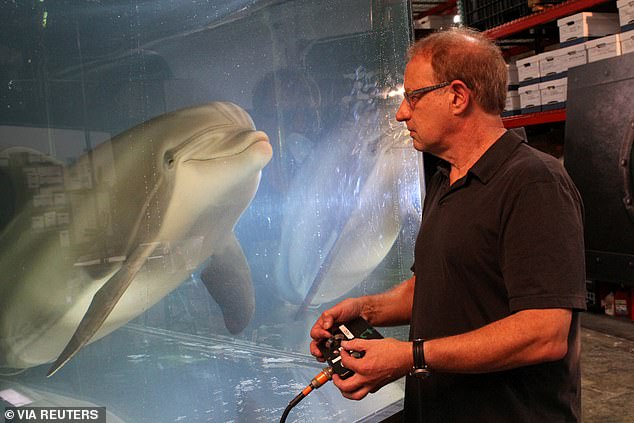
Edge Innovations, a US animatronics company, has built a a life-like robotic dolphin that mimics the animal’s movements and sounds - creating the illusion of a live dolphin that humans can interact with
‘When I first saw the dolphin, I thought it could be real,’ said a woman who swam with the remote-controlled creature.
California-based Edge Innovations is known for its life-like aquatic creatures used in Hollywood films ‘Free Willy,’ ‘Deep Blue Sea’ and ‘Anaconda.’
The firm is now working on bringing these robotic wonders to the public and hopes the technology will one day entertain crowds at theme parks, instead of wild animals held in captivity.
Edge Innovations founder and CEO Walt Conti said: ‘ There are like 3,000 dolphins currently in captivity being used to generate several billions of dollars just for dolphin experiences. And so there’s obviously an appetite to love and learn about dolphins.’
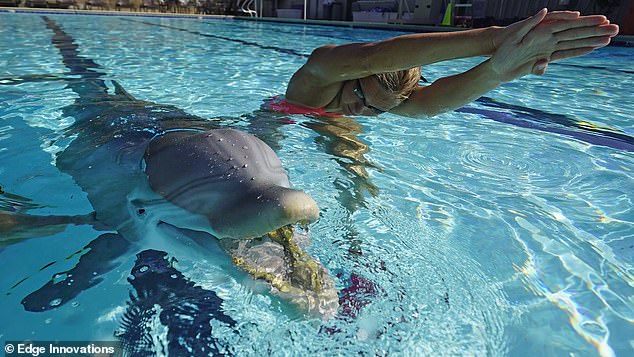



The firm is now working on bringing these robotic wonders to the public and hopes the technology will one day entertain crowds at theme parks, instead of wild animals held in captivity
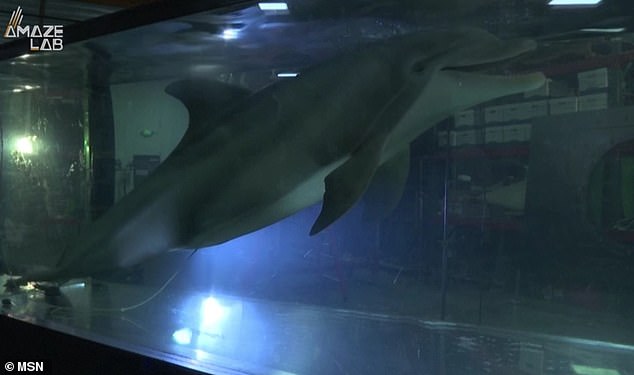



Resembling a bottlenose dolphin, the 550-pound machine is deigned with skin made from medical-grade silicone and a battery that allows for up to 10-hours of swimming
Animatronics may bring back audiences turned off by parks using live animals, Conti continued.
Some 20 European countries have already banned or limited the presence of wild animals in circuses.
At Edge’s Hayward, California headquarters, its 550-pound (250-kg), 8-and-a-half-foot (2.5-meter) animatronic dolphin with skin made from medical-grade silicone headlined a program for schools in partnership with TeachKind, part of People for the Ethical Treatment of Animals (PETA).
It is capable of making certain animatronic gestures to interact with guests, including squeaking noises and vigorously shaking its head back and forth.
However, the robotic dolphin starts at $3 million to $5 million.
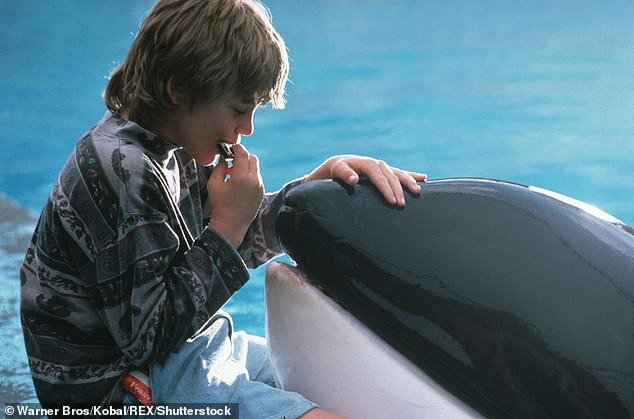



California-based Edge Innovations is known for its life-like aquatic creatures used in Hollywood films ‘Free Willy,’ (pictured) ‘Deep Blue Sea’ and ‘Anaconda’
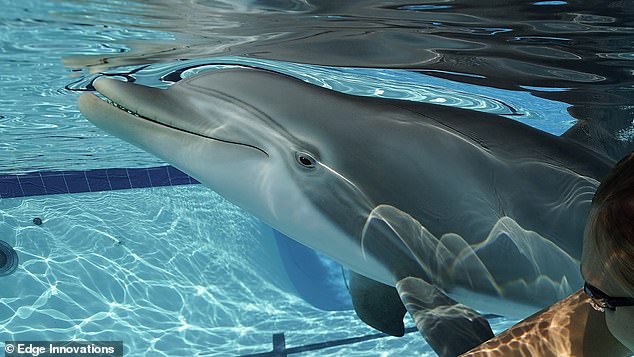



At Edge’s Hayward, California headquarters, its 550-pound (250-kg), 8-and-a-half-foot (2.5-meter) animatronic dolphin with skin made from medical-grade silicone headlined a program for schools in partnership with TeachKind, part of People for the Ethical Treatment of Animals (PETA)
Roger Holzberg, creative director for Edge’s animatronic program, said: ‘The idea of this pilot is really to create a kind of ‘Sesame Street’ under water,’ said
‘Those characters taught a generation how to feel about different kinds of aspects of humankind in ways that had never been imagined before. And that’s what we dream of with this project.’
Edge first unveiled the robotic dolphin in June, but was still in the prototype stage.
The firm had pitched the idea of the animatronic animal to aquariums and marine parks in China to help them deal with the country’s recent ban on wildlife trade.
Advertisement